Introduction
In a world of technology that is always changing, drone cameras have become an enormous priority for people who love taking photographs and videos. These drones give you a unique perspective and allow you to take amazing shots from above that you could only get with expensive helicopter services in the past. In this comprehensive guide, we’ll explore what drone cameras are, and their importance, and review some of the best drone cameras on the market, along with their pros and cons.
What is a Drone Camera?
A drone is a flying device equipped with a high-resolution camera on it. It is sometimes referred to as a quadcopter or an unmanned aerial vehicle (UAV). Drone cameras are capable of taking beautiful still photos and aerial footage while flying through the skies under remote control or using pre-programmed flight paths. They are available in a range of capacities and sizes, from professional-grade drones for business use to consumer-grade models for beginners.
Importance of Drone Cameras
Photography or Videography: Drone cameras have completely changed how we take pictures and videos by giving us an aerial perspective that enhances and expands the visual narrative.
Agriculture: Drone cams help farmers keep an eye on their crops, make maps, and do precision farming, which makes their work more efficient and productive.
Search and Rescue: Drone cameras that can be seen in the dark are useful for search and rescue activities, especially in dangerous or hard-to-reach places.
Protecting the environment: Scientists and environmentalists use drones with cameras to keep an eye on animals, keep track of developments in ecosystems, and check on the health of seas and forests.
Top Drone Cameras with their aspects
DJI Mini 3 Pro
The DJI Mini 3 Pro is a lightweight, compact drone that is well-known for having a lot of features and power for such a small size. It is a member of the well-liked DJI Mini series, which is known for its mobility and ease of usage.
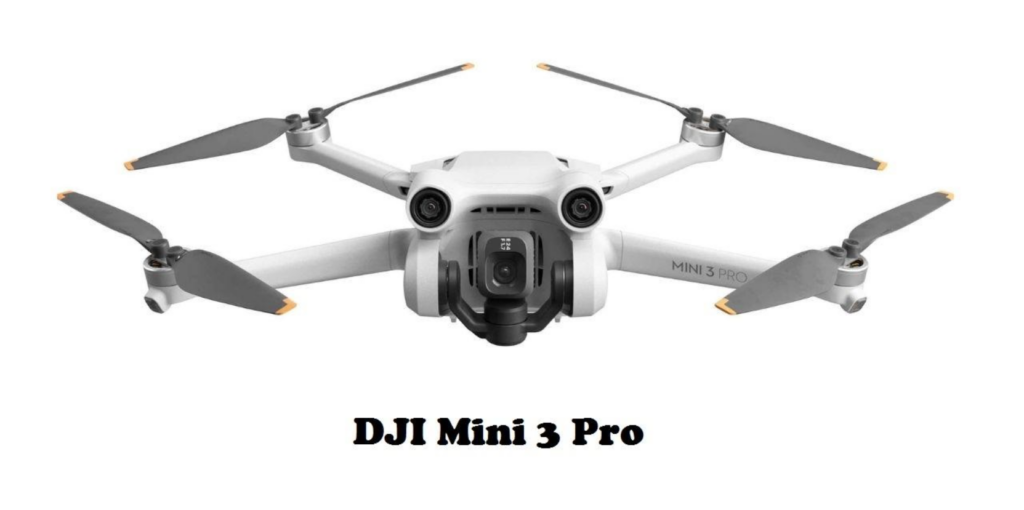
Specifications
Weight: Under 250 grams
Camera: 1/1.3-inch CMOS sensor, 48MP photos, 4K/60fps video
Aperture: f/1.7
Lens: 24mm equivalent focal length (84° FOV)
Internal Storage: None (micro SD card supports up to 512 GB).
Positive aspects
- Its lightweight and compact design makes it easier to carry.
- 1/1.3-inch sensors and 4K video recording capabilities provide excellent image quality.
- Triple-directional obstruction detection for increased safety
- Up to 34 minutes of flight time
- Tools for making creative movies, like ActiveTrack and QuickShots
- OcuSync 3.0 makes sure that video communication over long distances is stable and clear.
Negative aspects
- A little drone is expensive.
- When flying sideways, exercise particular caution, as there are no side sensors.
DJI Mavic Air 2
One of the most well-known drones made by DJI, a top producer of aerial photography equipment, is the Mavic Air 2. Its advanced features, small size, and superior camera performance have made it popular since its release in April 2020.
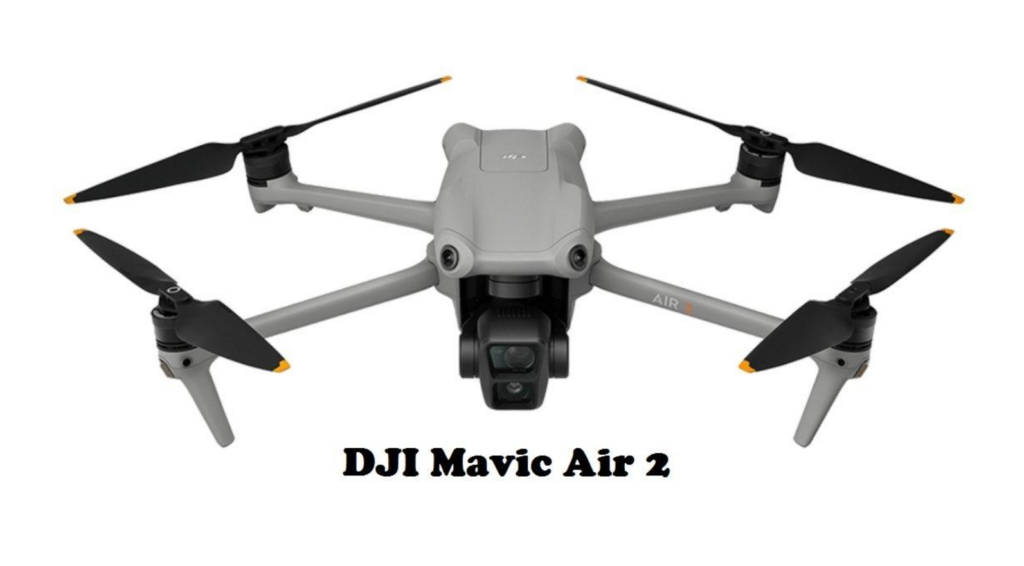
Specifications
Weight: 570 grams
Camera: 1/2-inch CMOS sensor, 48MP photos, 4K/60fps video
Aperture: f/2.8
Lens: 24mm equivalent focal length (84° FOV)
Internal Storage: 8 GB (expandable with a micro SD card up to 256 GB)
Positive aspects
- A 48-megapixel camera with 4K/60 frames per second.
- An extended flight that can last up to 34 minutes in duration.
- Top, bottom, and rear sensors for enhanced obstacle avoidance.
- Foldable and compact design for convenient portability.
- Intelligent flight modes, such as Point of Interest 3.0 and ActiveTrack 3.0
Negative aspects
- The difficult learning curve for novices.
- Poorer low-light performance than on more expensive models.
Autel Robotics EVO II
A high-performance drone with remarkable aerial photography and cinematography capabilities is the Autel Robotics EVO II.
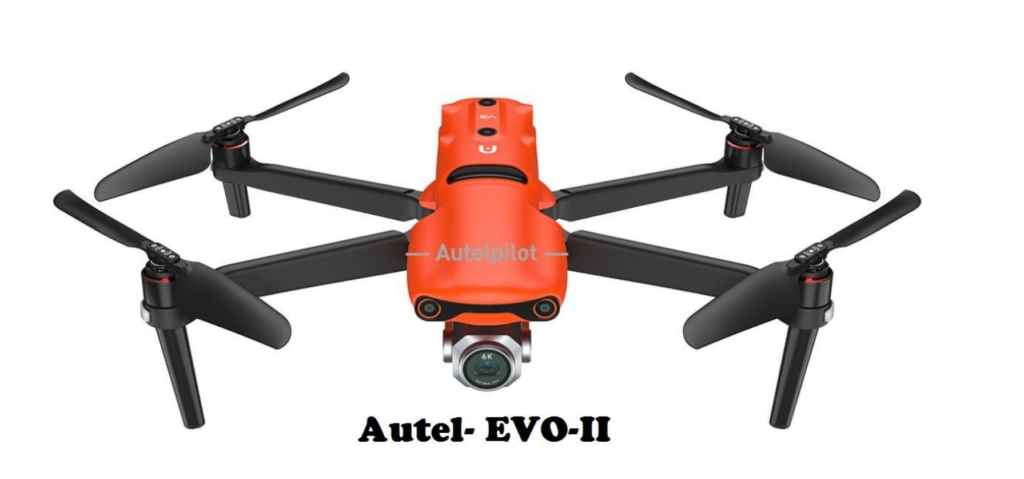
Specifications
Weight: 1174 grams
Camera Options:
EVO II 8K: 1/2-inch CMOS sensor, 48MP photos, 8K/25fps video
EVO II Pro 6K: 1-inch CMOS sensor, 20MP photos, 6K/30fps video
EVO II Dual: Combines a 640×512 FLIR thermal sensor with an 8K visible light camera
Aperture: f/2.8 (EVO II 8K), f/2.8 to f/11 (EVO II Pro 6K)
Lens: 26mm equivalent focal length (EVO II 8K), 29mm equivalent focal length (EVO II Pro 6K)
Internal Storage: 8 GB (expandable with a micro SD card).
Positive aspects
- 8K video capabilities allow for recordings with exceptionally high resolution.
- Highly detailed images require 48 megapixels.
- Up to 40 minutes of flight duration.
- Avoiding obstacles in both directions will make flying safer.
- There are no geofencing limitations, giving pilots greater latitude in their flight paths.
Negative aspects
- More expensive than DJI drones
- Limited support for third-party apps
Parrot Anafi
The Parrot Anafi is a compact and lightweight drone that has gained recognition for its distinctive camera functionalities and portability.
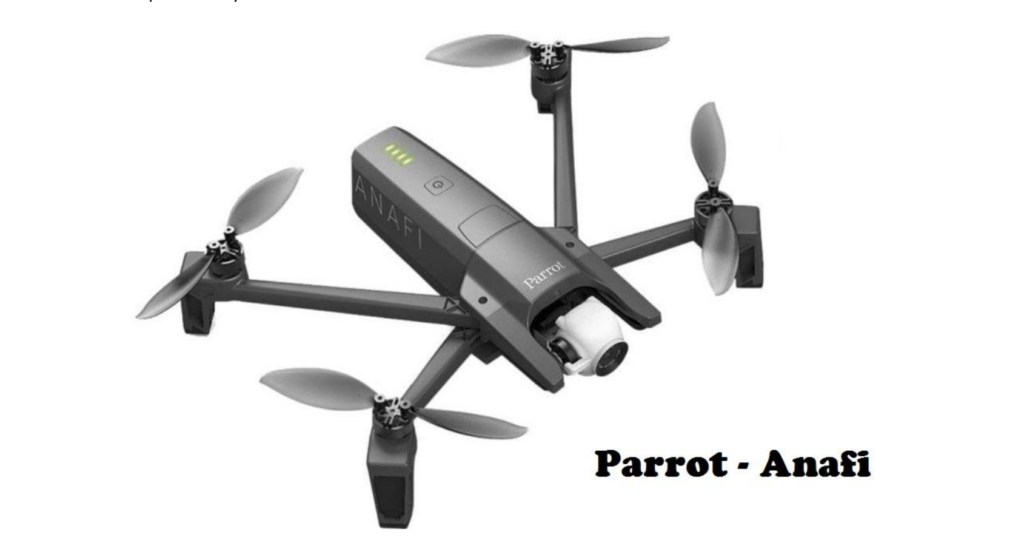
Specifications
Weight: 320 grams
Camera: 1/2.4-inch CMOS sensor, 21MP photos, 4K HDR/30fps video
Aperture: f/2.4
Lens: 23mm equivalent focal length (69° FOV)
Internal Storage: None (micro SD card supports up to 128 GB).
Positive aspects
- A 21-megapixel camera with 4K HDR for high-quality images
- A 180-degree tilt stabilizer for unusual photography angles.
- It is designed to be ultra-compact and lightweight for portability.
- During flight, it is quieter than a lot of other drones.
Negative aspects
- A limited capacity to avoid obstacles
- 25-minute flight duration is shorter than with bigger drones.
Skydio 2
A cutting-edge drone, the Skydio 2 is renowned for its outstanding autonomous flying abilities and avoidance of obstacles technologies.
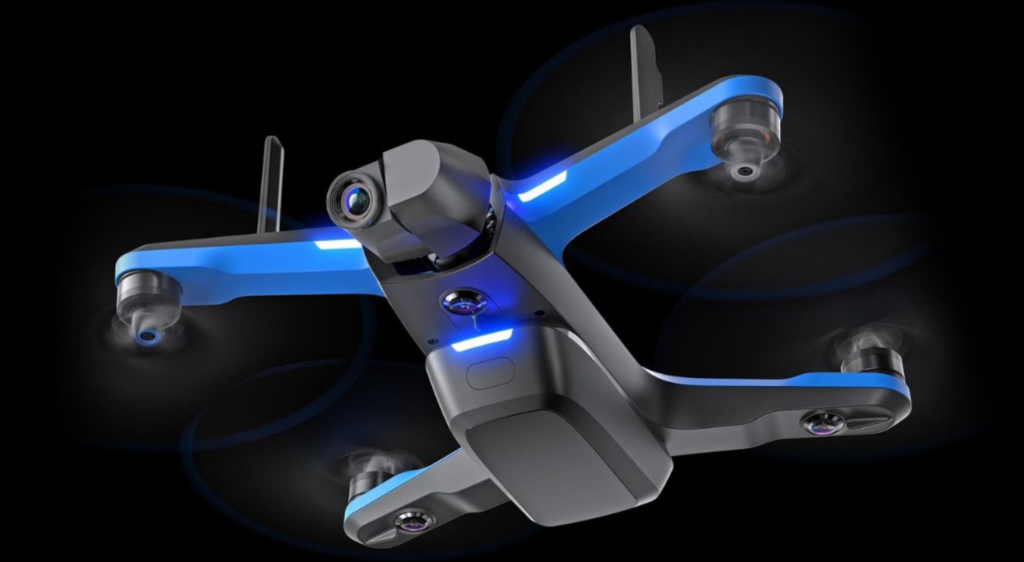
Specifications
Weight: 775 grams
Camera: 1/2.3-inch CMOS sensor, 12MP photos, 4K/60fps video
Aperture: f/2.8
Lens: 20mm equivalent focal length (77° FOV)
Internal Storage: None (micro SD card support up to 256 GB)
Positive aspects
- 360-degree coverage and best-in-class obstacle avoidance
- 12 MP camera and 4K/60 fps video
Negative aspects
- There are few manual control choices available to pilots with skill.
- A slightly smaller field of vision than that of some rivals.
Due to their pros and cons, these drones can be used for a variety of purposes and by a range of users.
Tips on Choosing the Best Drone Camera
When choosing a drone camera, keep these things in mind to make sure you get the ideal device for your needs:
1. Objective: Figure out whether you require a drone for photography for fun, videography for work, or specific jobs like mapping or inspections.
2. Camera Quality: To get clear, steady shots, choose drones with high-resolution cameras and good picture stabilization.
3. Flight Time: Think about how long the drone can fly on one recharge and how long the battery lasts.
4. Range: Determine the furthest the drone can go from the controller before losing the signal.
5. Portability: Choose small, foldable drones that are lightweight and simple to transport if you intend to travel using your drone.
6. Budget: Set a spending limit and search for the best drone that fits your budget while still providing the qualities you need.
Conclusion
Professionals in a variety of businesses, including photographers and videographers, now consider drone cameras to be an essential tool. There is a drone camera available that may be used for a variety of purposes, such as monitoring agricultural fields, inspecting building sites, or snapping pictures of magnificent scenery.
Think about things like image resolution, battery life, mobility, and avoiding obstacles when selecting a top-of-the-line drone camera. With a drone camera, enjoy the aerial perspective and achieve new heights in your photography and cinematography.
Keep in touch with cutting-edge wireless technology! Explore Hollyland’s blogs to get the most up-to-date information on wireless solutions, video transmission, and professional advice designed for content producers and creators in a dynamic environment.
FAQ:
Can I fly a drone camera without a license?
If your drone weighs more than a specific amount or is being used for commercial purposes, you may be required in many countries to register it and get a license. Check the local regulations before taking to the skies.
Is it possible to use drone cameras indoors?
Sure, some drones are made to be used indoors, but you still need to make sure you have enough room and watch out for hazards.
Do drone cameras withstand bad weather?
Drone cameras are not always waterproof. It’s important to review the manufacturer’s specs and steer clear of bad weather before flying.
How should I take care of my drone camera?
Inspect for firmware updates regularly, keep the drone in a dry, safe area, clear the camera lens, and look for damage to the blades and batteries.
Can drones fly when it’s raining?
It is not recommended to fly consumer drones in the rain due to their lack of waterproofing. Certain professional-grade drones made for professionals have weather sealing and can withstand minor rain.

































.png)




